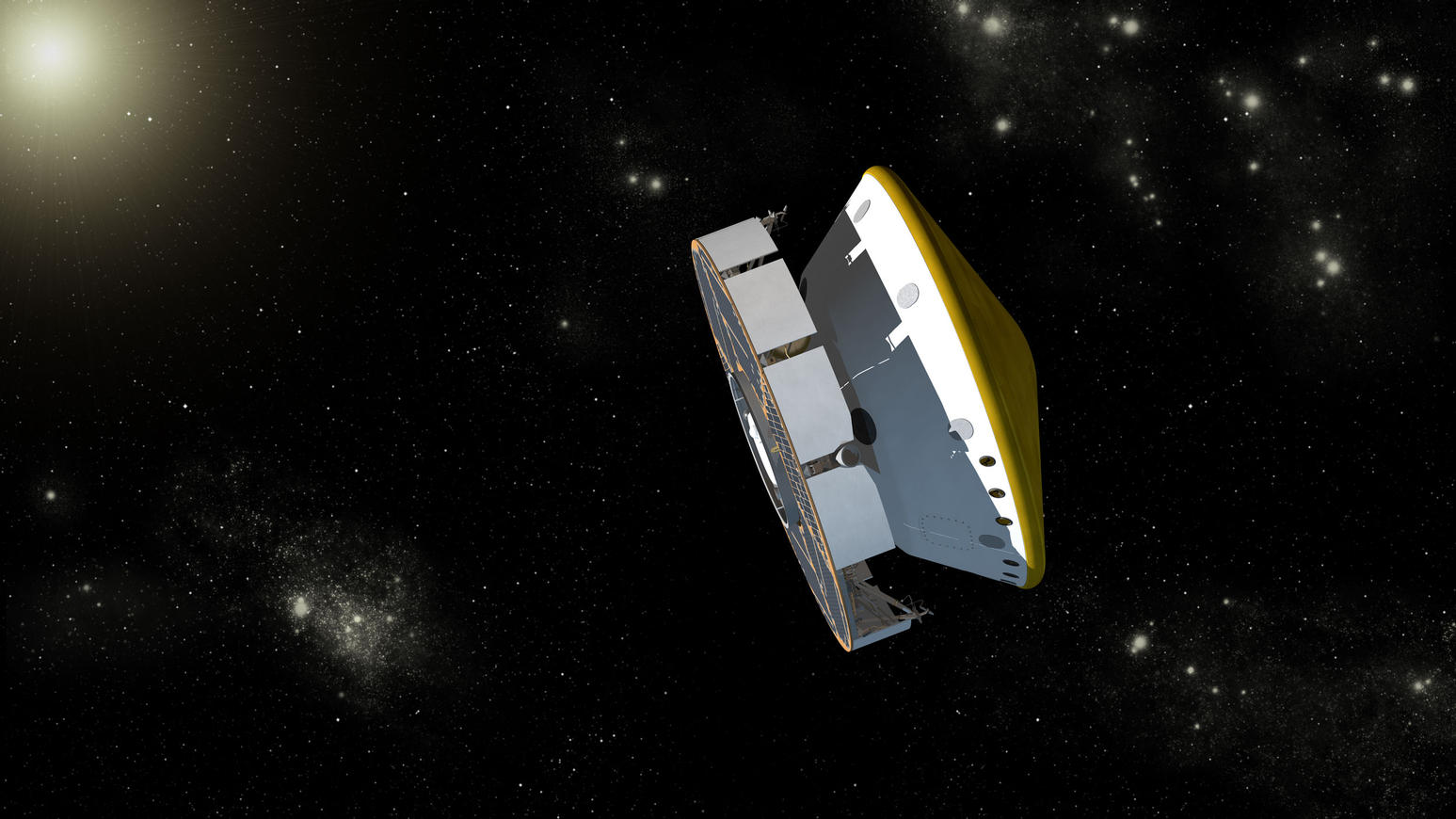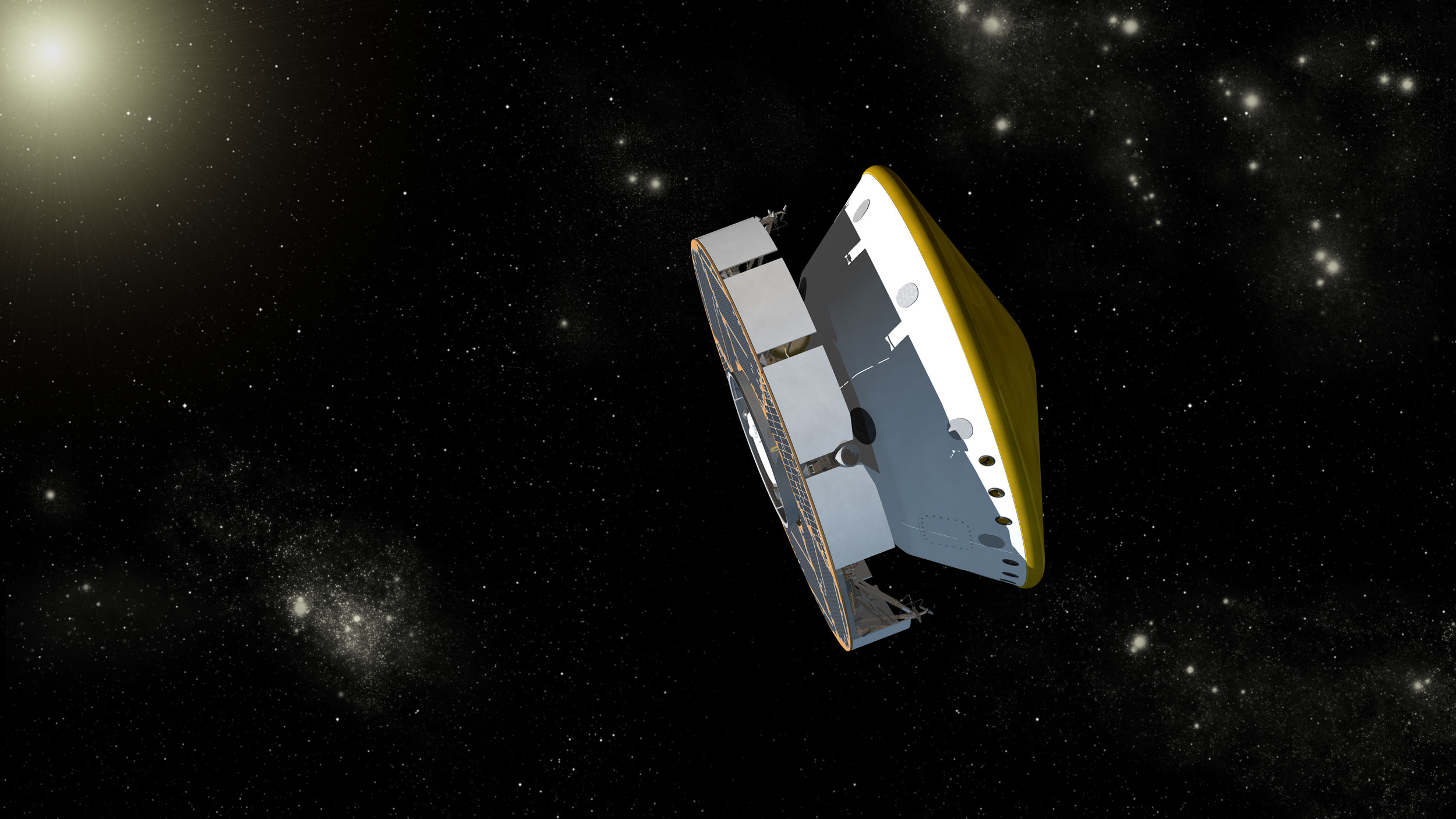Mars Science Laboratory Spacecraft During Cruise, Artist’s Concept

| Credit | NASA/JPL-Caltech |
|---|---|
| Language |
|
This is an artist's concept of NASA's Mars Science Laboratory spacecraft during its cruise phase between launch and final approach to Mars. The spacecraft includes a disc-shaped cruise stage (on the left) attached to the aeroshell. The spacecraft's rover (Curiosity) and descent stage are tucked inside the aeroshell.
Along the way to Mars, the cruise stage will perform several trajectory correction maneuvers to adjust the spacecraft's path toward its final, precise landing site on Mars. The Mars Science Laboratory spacecraft will use the stars to navigate. A star scanner on the cruise stage will help keep the spacecraft on track by constantly monitoring its position relative to stars in our Milky Way galaxy. The cruise stage will have its own miniature propulsion system, consisting of eight thrusters to be fired on command using hydrazine fuel in two titanium tanks. It will also have its own power system, consisting of a solar array for providing continuous power. The vehicle will maintain stability by spinning about its central axis at two revolutions per minute.
The Mars Science Laboratory spacecraft is being prepared for launch during Nov. 25 to Dec. 18, 2011. Landing on Mars is in early August 2012. In a prime mission lasting one Martian year (nearly two Earth years) researchers will use the rover's tools to study whether the landing region has had environmental conditions favorable for supporting microbial life and for preserving clues about whether life existed.
NASA's Jet Propulsion Laboratory, a division of the California Institute of Technology, Pasadena, Calif., manages the Mars Science Laboratory Project for the NASA Science Mission Directorate, Washington.
More information about Curiosity is at http://mars.jpl.nasa.gov/msl/.

